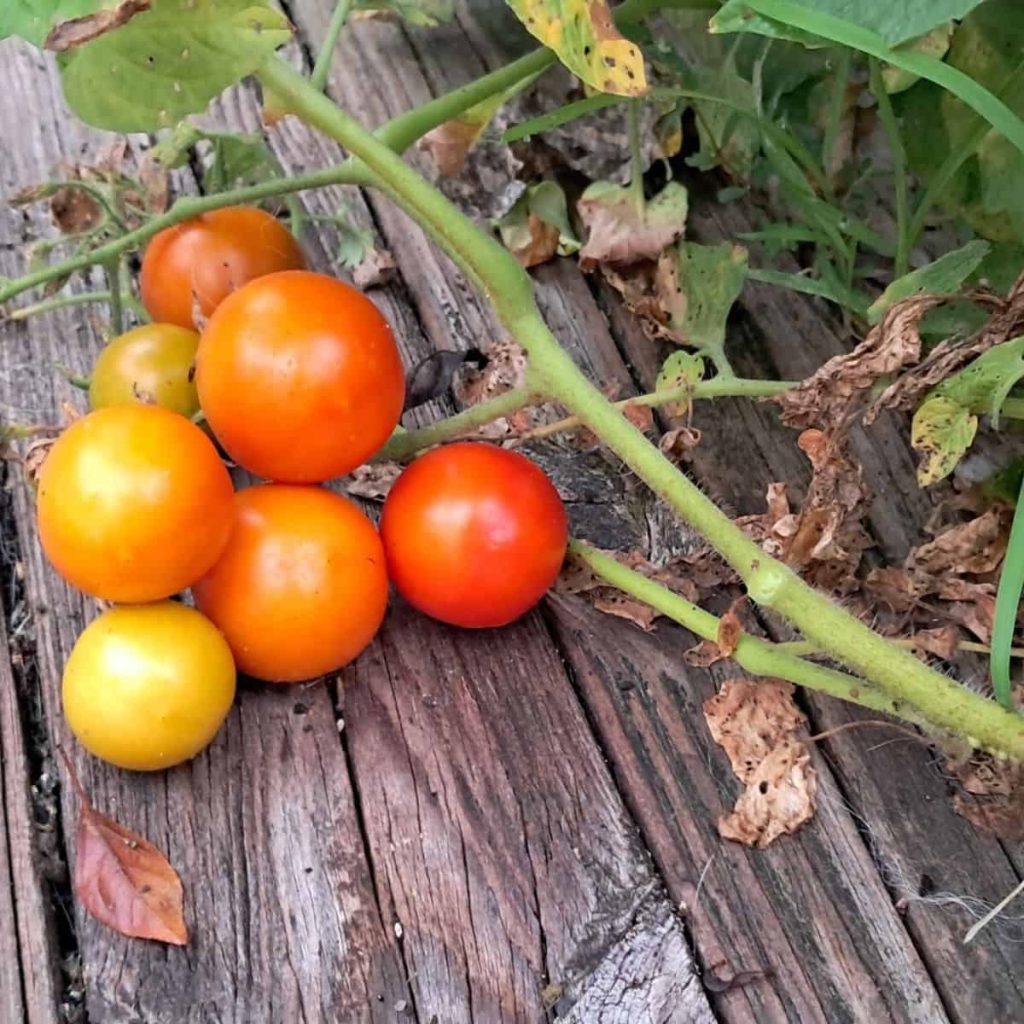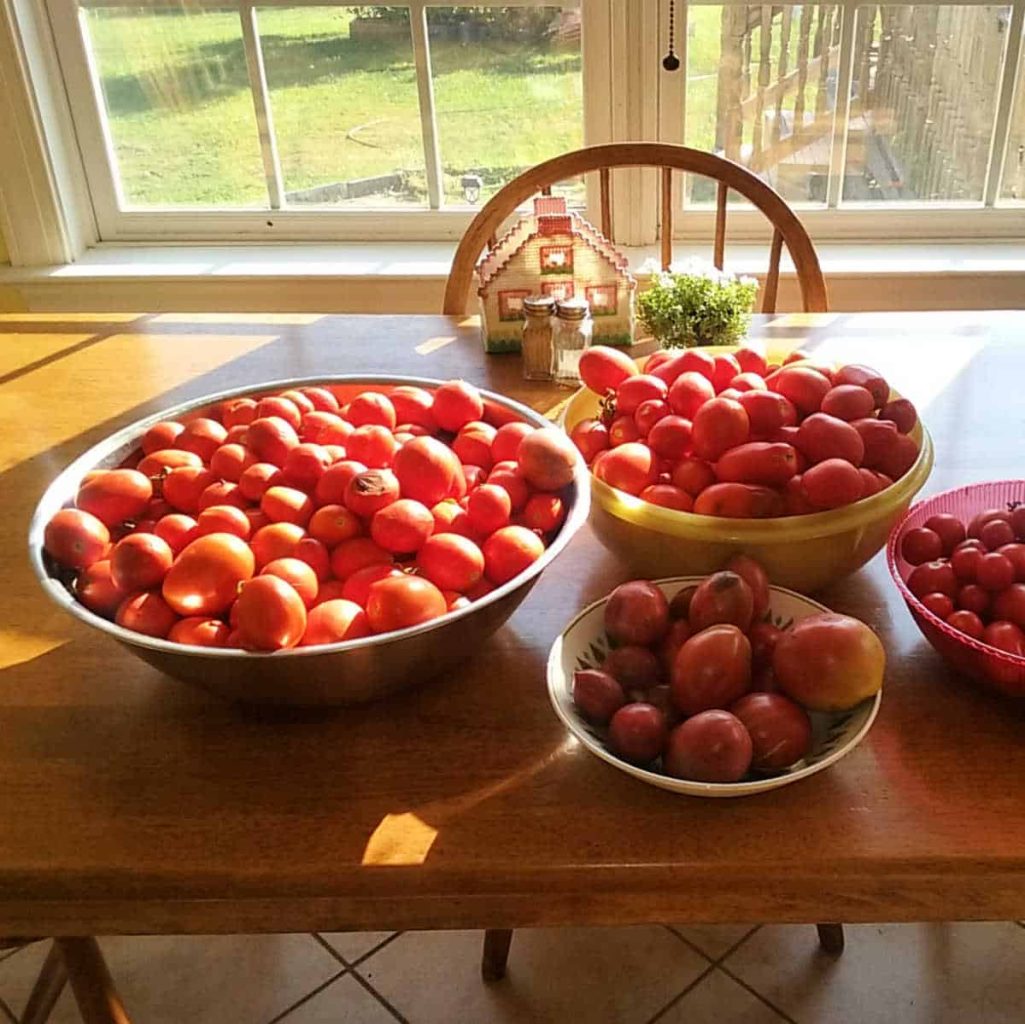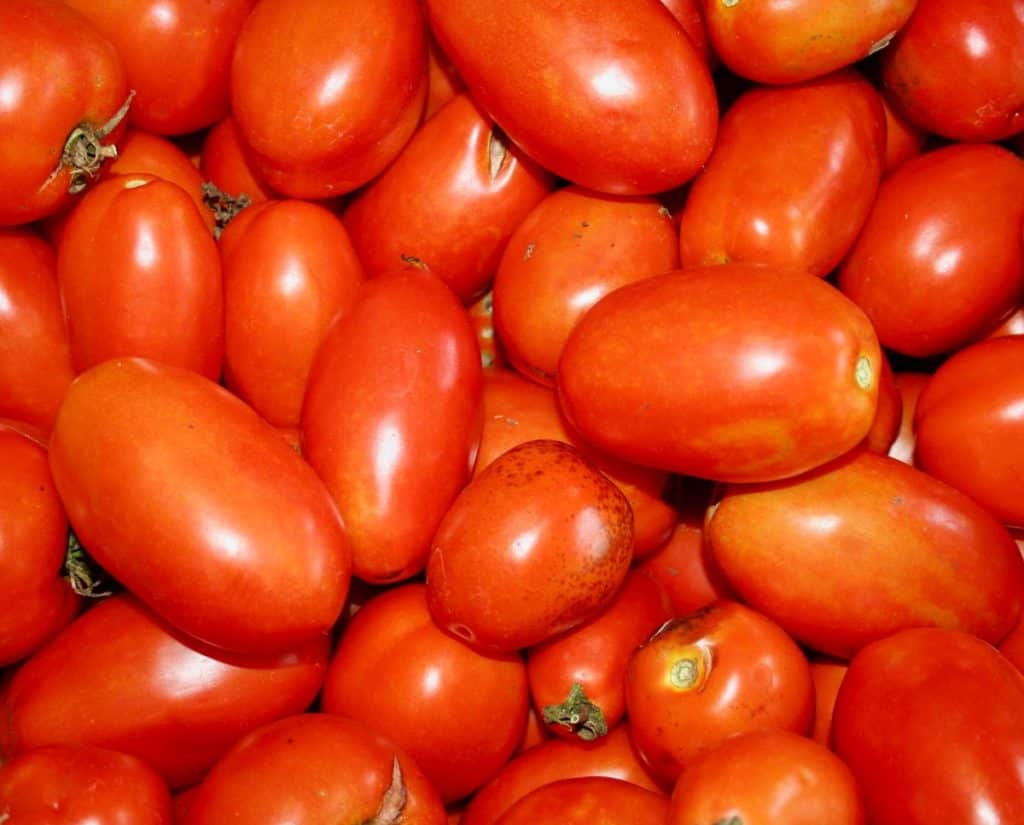Pick tomatoes frequently…and not just because they’re delicious! You can use them immediately in recipes (like my South of the Border Salad or others) or can them into tomato sauce or juice. Letting ripe tomatoes linger too long on the vine? Here’s why that’s a missed opportunity.



Pick Tomatoes Frequently to Encourage Tomato Production
When you pick tomatoes frequently, you encourage the plant to produce more.
Tomato plants are biologically wired to reproduce. When fruit ripens and is picked, the plant responds by channeling energy into producing more blooms and fruit to complete its life cycle. But if ripe tomatoes are left on the vine, the plant assumes its job is done, and production slows.
I’d forgotten about this bit of garden wisdom. You see, tomato and other plants that produce “fruits” do so as part of their reproductive cycle. The tomato is the seed container for the tomato plant. When you slice open a tomato, you can see the tiny seeds inside.
When you pick the fruits or flowers, the plant senses the loss. All living things strive to reproduce, sharing their genes so that their genetic material can live on. It’s the energy of life, the push to reproduce. Among plants, it’s what we, as gardeners, can harness to encourage an abundance in our gardens.
By harvesting regularly, you’re essentially “resetting” that reproductive drive, prompting the plant to keep flowering and fruiting throughout the season.





[…] tomatoes should be harvested as quickly as possible. The cracks allow mold to develop. I also find that the birds, especially crows, use the cracks to […]